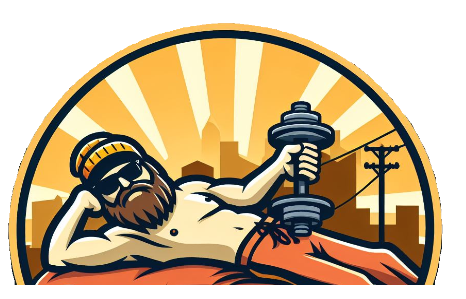How to Reverse Bad Posture
In today’s world, where screens dominate our lives, it’s really no wonder bad posture has become such a widespread issue. We’re talking long hours hunched over desks, eyes glued to phones, and hardly a break to stretch. All these habits pile up, making slouching a part of the norm.
Spotting bad posture isn’t always a piece of cake. Rounded shoulders, a neck that juts forward, or a back that curves more than it should are all giveaways. But it’s not just about standing or sitting straight. Poor posture can make your back ache and even mess with your confidence.
Good posture plays a huge role in both our health and how we carry ourselves. It can affect everything from how comfy you feel to your mood. Imagine walking into a room with your head held high and your back straight. It gives off a vibe of confidence and internal strength.
So, why do those aches and pains happen when posture isn’t right? It’s all about the muscles and joints working overtime. Our bodies aren’t built to be slumped or twisted for too long.
Muscles get stretched or tight in all the wrong places, leading to discomfort or pain. Understanding these roots helps in figuring out how important it is to make changes.
Four Exercises that can help improve poor posture.
Let’s face it, most of us could use a little help maintaining good posture. The secret weapon?
Exercise is one of them. Regularly doing specific exercises can help strengthen muscles and ease out those nagging posture issues.
Simple stretches like chest openers and seated twists are great starting points for loosening up muscles that have stiffened from all the hunching. They’re super easy to fit into your day and can work wonders in letting your body realign.
Another great option is focusing on your core muscles. Strengthening your abs and back muscles is crucial for maintaining a solid posture base. Planks and bridges are top picks here, boosting strength and stability that keep you upright and strong.
For those suffering from tech neck or slouched shoulders, exercises like chin tucks and scapular squeezes come in handy. They specifically target the muscles that help pull everything back in line.
Let’s go through some essential moves.
1. Wall Angels
Purpose: Strengthens the upper back, shoulders, and helps correct rounded shoulders.
How to do it:
- Stand with your back against a flat wall. Your feet should be about 6 inches away from the wall, and your lower back, upper back, and head should all be touching the wall.
- Raise your arms up to shoulder height with elbows bent at 90 degrees, like you’re making a goalpost shape. The backs of your hands and arms should also be touching the wall.
- Slowly raise your arms up overhead while keeping them in contact with the wall. Go as high as you can without arching your back or losing contact with the wall.
- Slowly bring your arms back down to the starting position.
Repetitions: 2 to 3 sets of 10 reps
Tip: Go slow and controlled, quality over quantity.
2. Chin Tucks
Purpose: Strengthens the deep neck flexors and counteracts forward head posture.
How to do it:
- Sit or stand tall with your shoulders relaxed.
- Look straight ahead and gently draw your chin straight back toward your neck, as if you’re making a double chin. Don’t tilt your head up or down—just pull it straight back.
- Hold the tuck for 5 to 10 seconds.
- Relax and return to neutral.
Repetitions: 10 repetitions, 2 to 3 times per day
Tip: You can do this exercise anywhere—even while sitting at your desk.
3. Bird Dog
Purpose: Strengthens the core, glutes, and lower back, all of which support good posture.
How to do it:
- Start on your hands and knees, with hands directly under your shoulders and knees under your hips.
- Extend your right arm straight forward and your left leg straight back, forming a straight line from your hand to your foot.
- Keep your hips level and avoid arching your lower back.
- Hold for 5 seconds, then return to the starting position.
- Switch to the left arm and right leg.
Repetitions: 8 to 10 reps on each side
Tip: Engage your core muscles to stay stable.
4. Doorway Pec Stretch
Purpose: Stretches tight chest muscles that pull your shoulders forward.
How to do it:
- Stand in a doorway with your arm bent at a 90-degree angle, resting your forearm against the doorframe.
- Step forward with one foot to feel a stretch in your chest and the front of your shoulder.
- Hold this stretch for 20 to 30 seconds.
- Switch sides and repeat.
Repetitions: 2 to 3 times on each side
Tip: Keep your shoulder relaxed and don’t overstretch—it should feel good, not painful.
Remember, consistency is the golden rule when you want to really improve your posture through exercise. Make it a part of your daily routine, even if it’s just a few minutes each day. Set reminders or integrate these exercises during TV breaks to make it stick.
When done consistently they can help realign your spine, strengthen your posture muscles, and reduce strain on your neck and shoulders. Let me know if you want a printable routine or illustrations to go with these!
Posture Bands are my Secret Weapon.
These are game changers. I spend hours on a computer every-day and whatever exercises I do, (And I do a lot) I always revert back to bad posture.
Now I slap on this cheap product, (Less than 40 USD) and it keeps my back straight and upright all day.
Honestly It feels a little strange to start with, but after a while you get used to it and it is so much better for your posture. I challenge anyone to say otherwise.
Final Thoughts
It’s not just about exercise; daily habits play a huge role in maintaining good posture. Ergonomics is a game changer in improving how you work and move daily.
Setting up your workspace to support your back and neck can make a big difference. Adjust your chair, position your computer monitor at eye level, and ensure your feet are flat on the floor to find your perfect setup.
Everyday tasks can be a chance to practice mindful movements. Whether you’re lifting groceries or walking to the next room, keep posture in mind.
Straighten up, engage your core, and avoid unnecessary strain wherever you are.
Simple adjustments like this transform regular chores into mini-posture workouts.
Follow me on YouTube for more “health” insights.
Steve

Some links on this site may be affiliate links, and if you purchase something through these links, I will make a commission on them.
There will be no extra cost to you and, you could actually save money. Read our full affiliate disclosure here.

